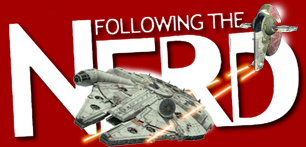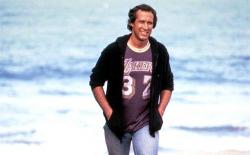Returning to a classic and tinkering with its effects, forcing in CG elements here and there, is rarely a popular move. At the height of audience’s romance with CGI at the turn of the millennium (that is to say, the honeymoon period when it was still new and impressive), even Red Dwarf didn’t escape the scalpel of the computer FX boffins.
Principally, and from a moralistic point of view, the issue is that you’re throwing out the creations of special effects artists of old who worked exceptionally hard to bring these things to the screen in the first place, at a time when they had to be genuinely inventive and adaptable to do things that had never been achieved before.
So to retroactively dismiss their sweat, toil and artistry with comparatively easy to achieve pixels conjured up on a hard-drive just seems cruel. But also, as George Lucas showed us, it’s usually quite pointless and out of place.
Whilst it’s an interesting idea putting Jabba in the first Star Wars, seeing this brown computerised blob appear again a mere two movies later as a tangible, and clearly differently proportioned, creature with weight and physical presence is just plain jarring. And that’s the problem.
We see the classic effects, actual objects whizzing by blue screens or pupuppeteered on set, taking their rightful place on screen where they’ve always been, and then the next scene, we see an incredibly obvious piece of computer enhancement, the purpose of which seems to be to show off the technology, rather than tell a story. All this, and we end up with a beloved trilogy filled with digital sore thumbs poking out of the screen and right at our eyes.
And if you think Star Wars fans don’t like their world being tampered with, you can only imagine the reaction of hardcore Trekkies when told some classic Trek was to get a make-over.
This started really in 2001 when Robert Wise, wishing to finally produce a Director’s cut of The Motion Picture, realised that to do so would mean finishing certain effects shots, replacing others and creating one or two more from scratch. However, rather than go the full Jar Jar route, the CG crew hired for the challenge decided that less would be more, setting out to only create CG effects that looked like they could’ve been achieved in 1979. Making CGI look like models? Surely not!
The result was masterful, with enchanced effects that didn’t jar uncomfortably with the old ones and actually sort of went unnoticed.
Fast-forward a few years and the unthinkable is uttered – adding CG to The Original Series. Again however, the subtley of the work put the Star Wars Special Edition to shame. Whereas, few thought Star Wars needed better effects, the effects from the low budget 60s Trek series actually was, perhaps, crying out for it. Its effects were achieved using an under-sized model and printed on film that got handed between effects and editing departments until it got so scratched and aged it looked older than any other shot in the show, meaning with basic film remastery, there was only so much you could do.
But now, with a CG model of the Enterprise, which again was made to look as much like physical model work as possible, the effects could be pristine and blend in with the show without taking the audience out of it. Planets got slight make-overs just so they could be taken a little more seriously and other little smudges were fixed here and there. The restraint is breathtaking.
Nobody gets artificially moved to avoid ret-conned bounty hunter blasts, but we do get an inspired little touch to the gorn – it blinks. That’s all. It’s not replaced by a new kung-fuing CG monster. It just blinks. And whilst the man in the lizardy suit still looks silly, we can take it ever so slightly more seriously now, without losing any of the charm.
This approach to Trek seems to have become accepted as The Next Generation’s slightly less reworked effects are currently doing the rounds on BluRay.
One could only wish that these kind of lessons in CG restraint were learned prior to 1997 in Skywalker Ranch. One such lesson is that, with spaceship effects, we’re not supposed to be saying “Wow, look at that CGI,” but rather, “Wow, look at that spaceship.”





Nerd Comments